Ultimate AMC 401 Engine Guide

Meet Austin
Austin has been a muscle car enthusiast since an early age with his Dad having a collection including a 1965 Mustang, 1968 Mercury Cougar, and a 1969 Mustang Mach 1 among many others. Austin received a technical writing degree from University of Colorado Denver with the intentions of becoming an automotive journalist. His automotive knowledge, enthusiasm, and hands on experience allow him to craft detailed, accurate, and high-quality articles for the passionate Muscle Car Club audience.
While AMC’s V8 offerings are often overlooked in favor of more mainstream options like the Small/Big Block Chevy, it is unquestionably that the AMC V8 has etched itself solidly into the history books. Powering some of the most successful American muscle cars and police fleet vehicles of the 70s, including the AMX 401 and Police Matador, the AMC tall-block was known for its power and dependability. The AMC 401 represented the best that the AMC tall-deck formula had to offer from 1971 to 1978.
Despite the 401 V8’s relatively short lifespan, it became an underground icon in the muscle car scene as well. Upon its release, and even after emissions regulations stifled the 401’s performance in 1971, the AMC 401 was one of the most powerful American V8s on the market. It represented a direct attack on the kingpins of the era, producing more power than the potent Pontiac 455 V8 and even the mighty Chevy 454 found in the top model C3 Corvette.
This guide will cover the AMC 401 V8 engine, including its history, specs, common problems, and performance upgrades.
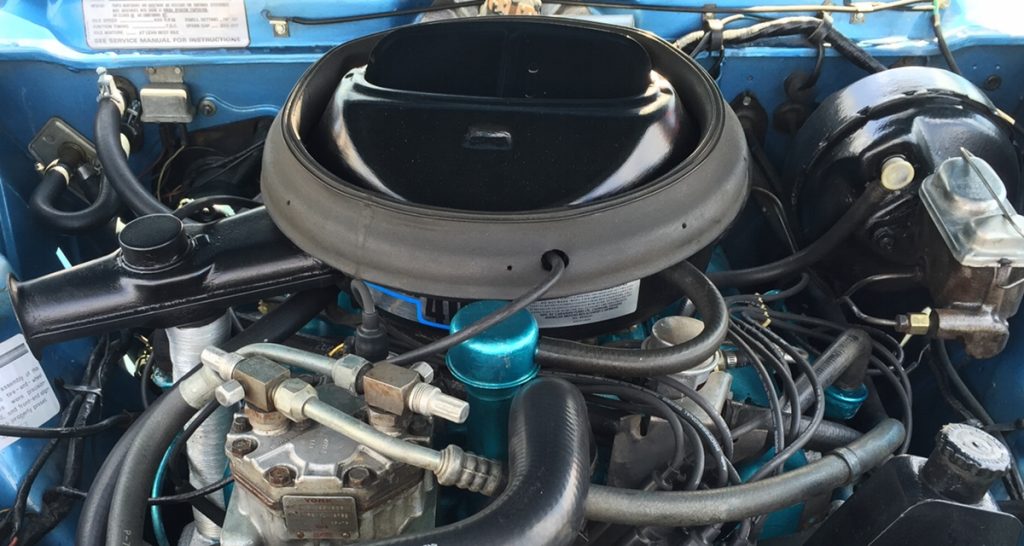
AMC 401 V8 Engine History
The AMC 401 tall deck was introduced in a very uncertain time for the muscle car and the large-displacement V8 engine in general. By 1971, the American muscle golden years were coming to a close due to the increasingly stringent emissions regulations by the U.S. government. The Clean Air Act of 1970 changed the automotive world by authorizing the development of comprehensive federal and state regulations to limit emissions. That obviously posed an issue for all manufacturers stuffing massive, thirsty, V8 lumps under the hoods of everything possible.
Prior to the introduction of the AMC tall-deck engines, the Gen 2 AMC short deck V8 engines had gained quite a reputation for powering small sedans and muscle cars alike. The AMC short-deck V8 was an evolution from the ‘Rambler’ V8 that powered the AMC fleet from 1956-1967. While the AMC short-deck V8 was a blank sheet design, it borrowed heavily from the Buick Big Block V8 design. Like the Buick, the AMC V8 featured a timing gear case that mounts both the distributor and oil pump. The entire oiling system was nearly identical to the Buick V8 as well.
Due to the success of the short deck in cars like the AMC 343 Marlin and AMC AMX 390, AMC kept the overall design heading into the 1970s. The major changes to the engine architecture included an increased deck height and a revised cylinder head design. Those changes warranted a generational change and new name, leading to the Gen-3 AMC tall-deck V8. As a result, the previous 290 and 343 V8s increased in displacement to 304 and 360 V8s. The 390 stuck around through the generational change for 1970, as AMC wanted to ride the success of the 390’s reputation. However, it would be stroked to 401 cid the following year.
AMC 401 V8 Engine Specs
| Engine | AMC 401 V8 |
| Configuration | OHV 90-degree V8 |
| Displacement | 401.11 cu in (6,573.0 cc) |
| Aspiration | Naturally Aspirated |
| Valvetrain | OHV 2 valves x cyl. |
| Block/Head | Aluminum/Aluminum |
| Bore x Stroke | 3.76 in x 3.20 in (95.5mm x 81.4 mm) |
| Compression Ratio | 10.2:1, 9.5:1, or 8.25:1 |
| Weight | 600 lbs |
| Horsepower | 235-335 bhp |
| Torque (lb-ft) | 345-435 lb-ft |
AMC 401 Engine Design
As we mentioned earlier, the AMC 401 was an evolution of the earlier Gen-2 AMC small-deck V8 series. As their name suggests, the Gen-3 tall deck series, including the AMC 304, AMC 360, AMC 390, and AMC 401, received a taller deck height than the earlier gen-2 V8s by 0.16 inches, allowing for an equal increase in stroke length as well, resulting in more overall displacement. Despite the difference in displacement between the 304, 360, and 401, their external dimensions are identical.
The AMC 401 V8 is simply a stroked version of the AMC 390 that the 401 replaced in 1971. Both the 390 and 401 shared the same 4.165” bore, however, the 401’s bore was increased by 0.16” in order to take advantage of the additional deck height. Like the previous AMC 390 V8, the 401 received a forged steel crankshaft and, most notably, forged connecting rods. Forged rods were a massive benefit in the high-performance community, as the cast rods in most other domestic engines were the first components to give out under high load.
Another important change made to the Gen-3 AMC V8s was the introduction of new high-flow dog-leg cylinder heads. Earlier Gen-2 AMC V8s made use of rectangular port heads, which hampered airflow over Gen-3 heads. The dog-leg design not only increased the size of the exhaust ports, but also revised the port floor design to a convex curve, which reduced turbulence in the exhaust manifold. Overall, the redesigned heads flowed around 20% more than the previous Gen-2 heads.
What Cars Used the AMC 401 V8?
Over the course of the AMC 401’s short 7-year build cycle, it could be factory optioned in the following vehicles:
- 1971-1974 AMC Matador
- 1971-1974 AMC Javelin
- 1971-1974 AMC Ambassador
- 1975-1976 AMC Ambassador Police Interceptor
- 1974-1978 Jeep Cherokee
- 1974-1978 Jeep Wagoneer
- 1974-1978 Jeep J-Series Pickup
- 1973-1974 Internation Harvester Light Line (V-400 configuration)
Best AMC 401 Engine Upgrades
Due to the fact that the AMC 401 is the largest displacement engine in the Gen-3 family, it is often the most common choice for those looking to build an AMC-powered build. While they might not be as common as some other GM and Ford offerings, 401 builds certainly stand out. The 401’s inherent strength, due mainly to the forged internals, makes it a great engine to build out.
With that being said, most people that choose to build AMC V8s are aware of the oiling issues inherent with the engine’s design and perform fueling modifications to allow for sustained high-rpm operation. Here are our recommended AMC 401 engine upgrades:
- AMC 401 Performance Carburetor
- Increased Pontiac 400 Cylinder Bore
- More aggressive 6.6L V8 Cam
- Pontiac 400 Long Tube Headers
AMC 401 Performance Carburetor
Upgraded carburetors are one of the most common and rewarding modifications on pretty much every muscle-era V8 engine. The essential job of a carburetor is to supply the engine with the correct mixture of fuel and air to provide optimal performance. Almost every AMC 401, excluding 2-barrel International Harvester models, came with a 4-barrel AutoLite 4300. While the original 4300 provided a respectable 600 cfm, its design was inherently inferior to quite a few other performance carbs on the market.
Like with upgraded AMC 401 cams and headers, the right carb choice for your build is subjective. Ultimately, you’ll have to find a usable balance between power, reliability, fuel economy, and overall drivability. Carburetor sizing is one of the most important considerations that you’ll have to take into account. That is the aspect that will affect performance the most. It is also important to pair an upgraded AMC 401 carburetor with the other performance modifications on the engine. There should be a symbiotic relationship between all performance parts, all working towards the same goal.
Most 401 owners agree that 650 cfm tends to provide the best overall balance on a lightly modified engine. However, a larger 700-750 cfm carb might be necessary if you are going all out on your build. Edelbrock and Holley are by far the most popular options for aftermarket 401 cabs, each providing quite a bit of variety in terms of flow and features. Smaller 401 carbs will provide better overall throttle response, while larger ones tend to feel better at wide-open throttle. Overall, pick the carb that will suit your driving style best and supports your power goals.
AMC 401 High Compression Pistons/Overbore
Upping the factory 401’s compression is one of the quickest ways to more power. With that being said, that isn’t an easy process and requires quite a bit of thought to execute. Installing high-compression pistons can net a very substantial performance gain over a factory motor. In most cases, a quality set of aftermarket forged 9.5:1 compression pistons can take a 401 into the 425 horsepower range when paired with other supporting modifications.
If you do intend on upgrading to high-compression pistons, it is likely worth overboring the factory block as well. While there is some conjecture in the AMC community, 0.030” overbore is the most common move for those looking for a bit more displacement, with most enthusiasts claiming that 0.06” overbore is about as far as you can push the factory block. Regardless, the additional bore diameter does make a noticeable impact on performance.
The best performance gains can be seen from combining an overbored block with larger high-compression pistons. With that configuration, you can push the 401 to compression ratios as high as 10:1 while still running pump gas and maintaining a good level of on-street drivability. Of course, you’ll also have to think about the other auxiliary upgraded that you’ll have to make as well. Other upgrades like headwork, proper head gaskets, and the right cam arrangement are all very important when building a high-compression 401.
AMC 401 Camshaft Upgrade
Camshaft upgrades are an interesting topic when it comes to the AMC 401, mainly due to the wide range of 401 applications. For example, there are plenty of AMC muscle fans building out a 401 for use in AMC drag cars. On the other hand, there is a large community of 401 Jeep enthusiasts that are looking for additional low-end torque for rock crawling. Those two applications clearly have two very different requirements when it comes to camshaft upgrades.
Ultimately, choosing the right cam for your 401 V8 is a very individualized process. It depends on a number of important factors including what the vehicle will be used for, what you are looking for in terms of performance characteristics, how much you are willing to spend, and what other performance modifications you have already installed/are planning to install.
You’ll also have to consider whether you want to run a flat tappet or hydraulic roller cam. Both types of cam has its pros and cons. Flat tappet cams are the more traditional option and are generally more stable at higher RPMs. However, they tend to be less durable and cause serious damage if they fail. Due to the design of the lobes, hydraulic roller cams give you a lot more performance over a flat tappet even at the same duration. However, oil return issues from the valve covers can be exaggerated with a hydraulic high-performance cam on the 401.
It is also extremely vital to choose a camshaft that works in harmony with all of the other engine upgrades on your 401. For example, if you are planning on running an upgraded AMC 401 intake manifold that moves power higher in the rev range, you’ll want an AMC 401 camshaft that also plays into those strengths.
AMC 401 V8 Headers
Long tube headers have been a staple V8 engine modification essentially since their creation. There’s no doubt that they benefit the AMC 401 V8 quite a bit as well. The factory 401 V8 exhaust manifold wasn’t optimized for the best possible exhaust flow out of the factory. Additionally, they are exceptionally heavy. By eliminating the primary source of exhaust restriction right after the exhaust ports, long tube headers will allow your 401 to breathe much easier. That translates directly to more power and better responsiveness overall.
One of the biggest considerations to take into account when looking at AMC 401 headers is primary diameter. While it might seem like a good idea to go with the largest diameter headers available, that can actually negatively impact exhaust scavenging properties in some cases. It is generally a good idea to match the header diameter just for what your engine needs and stop there unless you have some extensive upgrades planned down the line. Any larger and you start losing performance.
1 5/8” headers seem to be the most common choice on lightly modified AMC V8s. That size is a good balance between added breathability and scavenging performance. 1 5/8” AMC 401 headers will typically provide ample flow until around the 450-500whp mark and provide a pretty healthy 25-30 horsepower gain. If you are planning on pushing further than that, it might be worth looking into larger 1 ¾”- 1 ⅞” options.
There are quite a few quality header options on the market for the AMC 401, with the most popular brands being Hooker and Hedman. The Hooker Competition headers are the most common option for high-horsepower AMC street builds. With that being said, Hedman’s 98316 street headers are another quality 1 ⅝” option.
Common AMC 401 V8 Engine Problems
Over the AMC 401’s build cycle, it proved to not only be a powerful engine, but a reliable one too. Due to the fact that AMC has essentially settled in with their V8 design 5 years prior to the 401, the engine was pretty well sorted out of the gate. With that being said, the 401, and the AMC V8 in general, are known to have significant oiling problems.
Most of the AMC 401’s issues can be attributed to old age at this point. However, there are some things that you should look out for / be weary of before taking on AMC 401 V8 ownership.
- AMC 401 Oiling Issues
- Oil Pump Failure
- Aftermarket Timing Gear Oiling Problems
AMC 401 Oiling Issues
One of the most common AMC 401 problems has to do with oil flow between the valve covers and crankcase. This wasn’t typically an issue during day-to-day driving. However, under sustained high-rpm operation, a major portion of the crankcase oil would get pumped into the valve covers and couldn’t return back to the crankcase in time to provide adequate lubrication to a number of bottom-end components. In some cases, high-rpm driving for only 15 minutes could lead to a spun crankshaft main bearing. Unfortunately, it seems to be a very common issue in modified 401 engines.
Luckily, there are a number of ways to prevent this issue from happening on your 401. One way is to upgrade to a larger oil pan with more oil capacity. The factory oil pan holds 5 quarts of oil. As much as 1.5 quarts can get pumped into the valve covers. That leaves very little in the pan itself. By upgrading to a larger oil pan, more oil will remain in the pan, even after a lot is pumped out. Most 401 enthusiasts recommend the aftermarket Milodon 8-quart oil pan, which allows for plenty of wiggle room. Alternatively, some people choose to run the stock oil pan but with 6 quarts of oil instead of 5.
Another solution to the issue is installing external oil return lines from the valve covers to the oil pan. That will allow for much of the excess oil in the top end to drain back down to the crankcase.
AMC 401 Oil Pump Failure
One of the most common issues related to the AMC 401 is oil pump failure. The issue truly stems from both the oil pump and timing cover’s design. Both the 401’s oil pump and oil filter are integrated into the timing chain cover. While that isn’t an issue in itself, the problem arises from the materials that were used for each part. While the oil pump is steel, the timing chain cover is aluminum. Over time the steel oil pump wears out the aluminum housing, eventually causing a failure of the part. As we covered above, the 401 isn’t a stranger to losing oil pressure and oil starvation. Oil pump failure is another way that can happen.
Unfortunately, due to the fact that the 401 has been out of production for quite a while and this issue is relatively common, prices for OEM oil pumps and aftermarket replacements are rather expensive. However, there are some oil pump rebuild kits available for the 401 which are significantly less expensive.
Aftermarket Timing Gear Oiling Problems
It probably isn’t fair to call this a problem with the AMC 401 V8 in factory form. In fact, timing gear oiling issues are only a problem with aftermarket cam gears. While it might not affect OEM engines, it is still a good thing to know if you intend on upgrading to a new camshaft or if you end up needing new timing gears after a timing chain replacement.
The issue arises due to the placement and size of the oiling passage on aftermarket timing gears. The front cam journal supplies a path for oil going to the distributor drive gear. Many times the timing gear has that groove in the wrong place or the groove extends beyond the diameter of the cam’s front journal. Due to the fact that the oiling passage extends past the cam journal diameter, it can cause a loss in flow going forward to the distributor drive gear.
The most common solution to the issue is to weld and machine the extended oiling journal to near factory specs. That decreases how far the oiling journal extends, preventing a loss of flow to the cam’s front journal. Once again, this isn’t typically an issue on factory timing gears, but is a pervasive issue on aftermarket ones.
AMC 401 Engine Guide Summary
The AMC V8 engine family is often overlooked by other more popular, tried and true, options like the Chevy small/big block. While the AMC 401 might not be the most popular engine from the muscle car era, it deserves its props. As AMC’s largest displacement engine, the 401 provided more than ample power for all of the vehicles that it powered. From the AMC Javelin to the Jeep Cherokee, the 401 V8 was versatile, powerful, and reliable.
The 401 is part of the third-generation tall-deck AMC engine series. The tall-deck series also featured the AMC 304, AMC 360, and AMC 390. As such, the 401 shares the same exterior dimensions as the others in the family. The 401 is known for its strength, in both stock and modified form. The 401 V8’s factory-forged internals are one reason that it is such a good engine to modify. While there are a number of popular modifications for the 401, including an upgraded carb, high-compression pistons, upgraded cams, and long tube headers, the 401 has some inherent issues that need to be solved before shooting for impressive power figures.
The 401 is known to have some severe oiling system issues that can cause some severe consequences. The main issue has to do with improper oil return from the valve covers to the crankcase. Under sustained high revs, oil tends to rush to the valve covers, starving the crankcase. Other oiling issues include oil pump failure and improper timing gear oiling when using an aftermarket gear.
Ultimately, the AMC 401 deserves much more praise than it is given. Since the 401 was only produced for 7 years, it is a rare and unsung hero of the muscle car era.

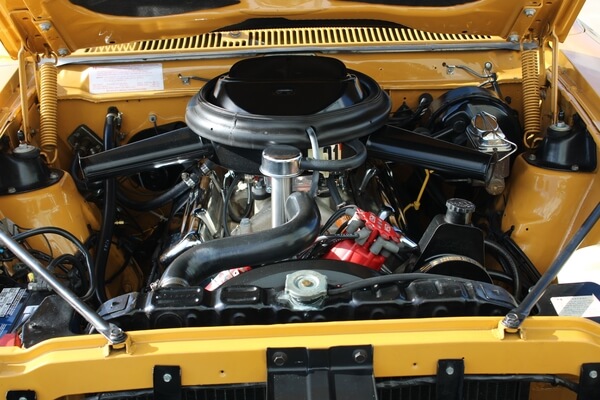
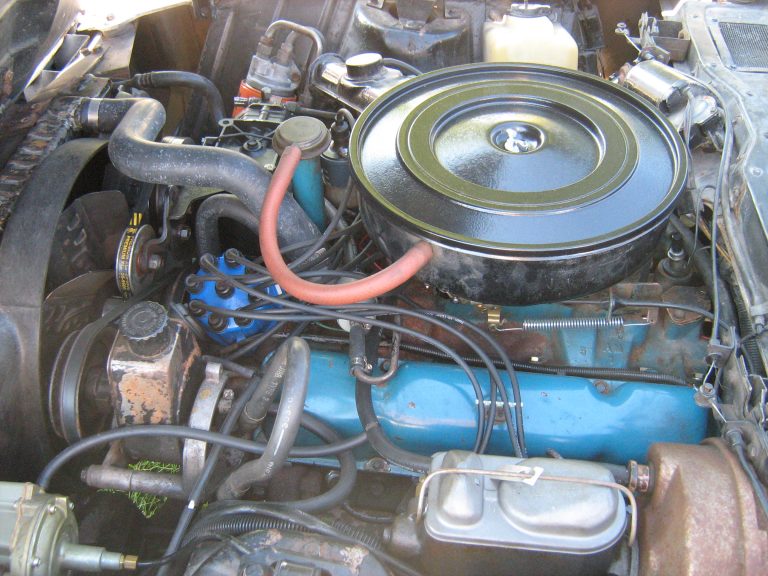
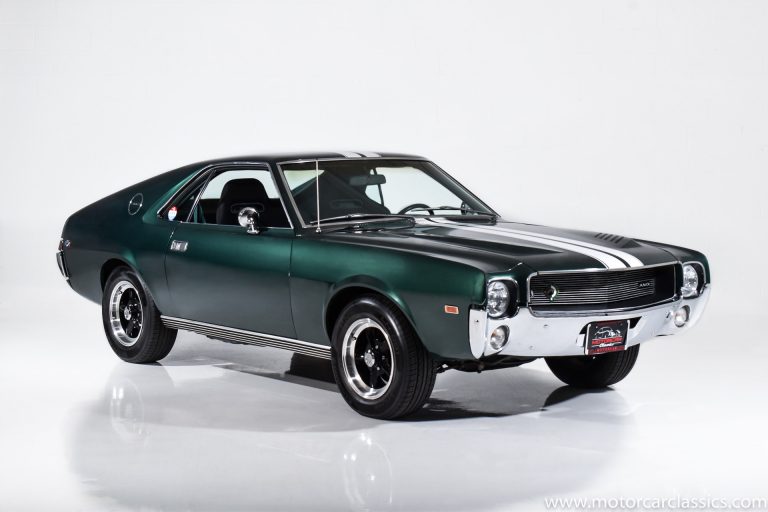
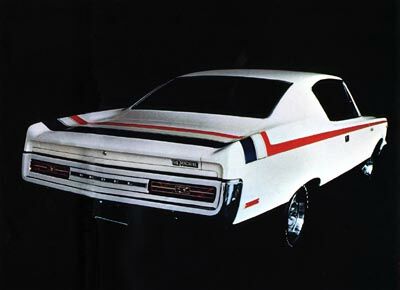
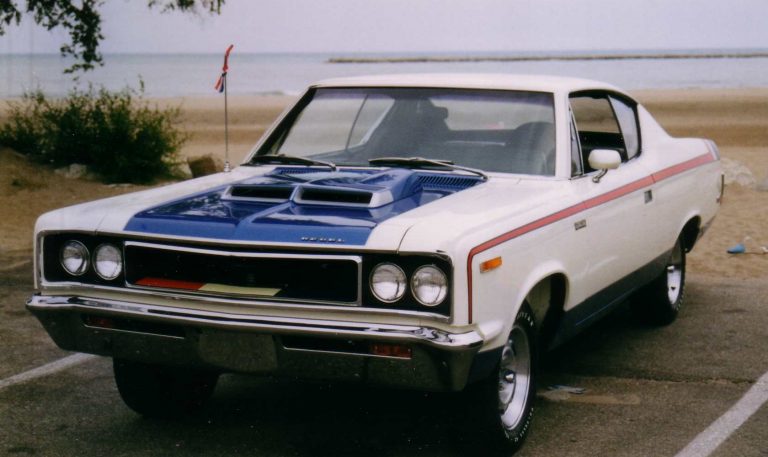
I’ve owned a bunch of Jeeps with the AMC engines. Mostly the 258″s , several 304″s, and finally a 401 that now drives my 86 CJ. And every one of them suffered from low oil pressure. Including my stock 401 that just had a fresh build prior to dropping it in. It was pushing maybe 40 lbs cold ,but quickly would drop when it got good and hot to as little as 5-7 lbs at idle. ENOUGH of this junk I said. I wish I could remember where I got this tip from, but I replaced the gears for the pump, which I probably didn’t even need to do, and then lappped the cover plate to tighten up the tolerance between it and the face of the gears, AND WAHHLA!!! 75lbs cold, and 30lbs easy in the hottest weather, and been running it like this for ten years.
The oil pump clearance modification is covered in a book AMC sold called Performance American Style. It also covers other mods including the porting for the Booth Arons pro stock Gremlin.